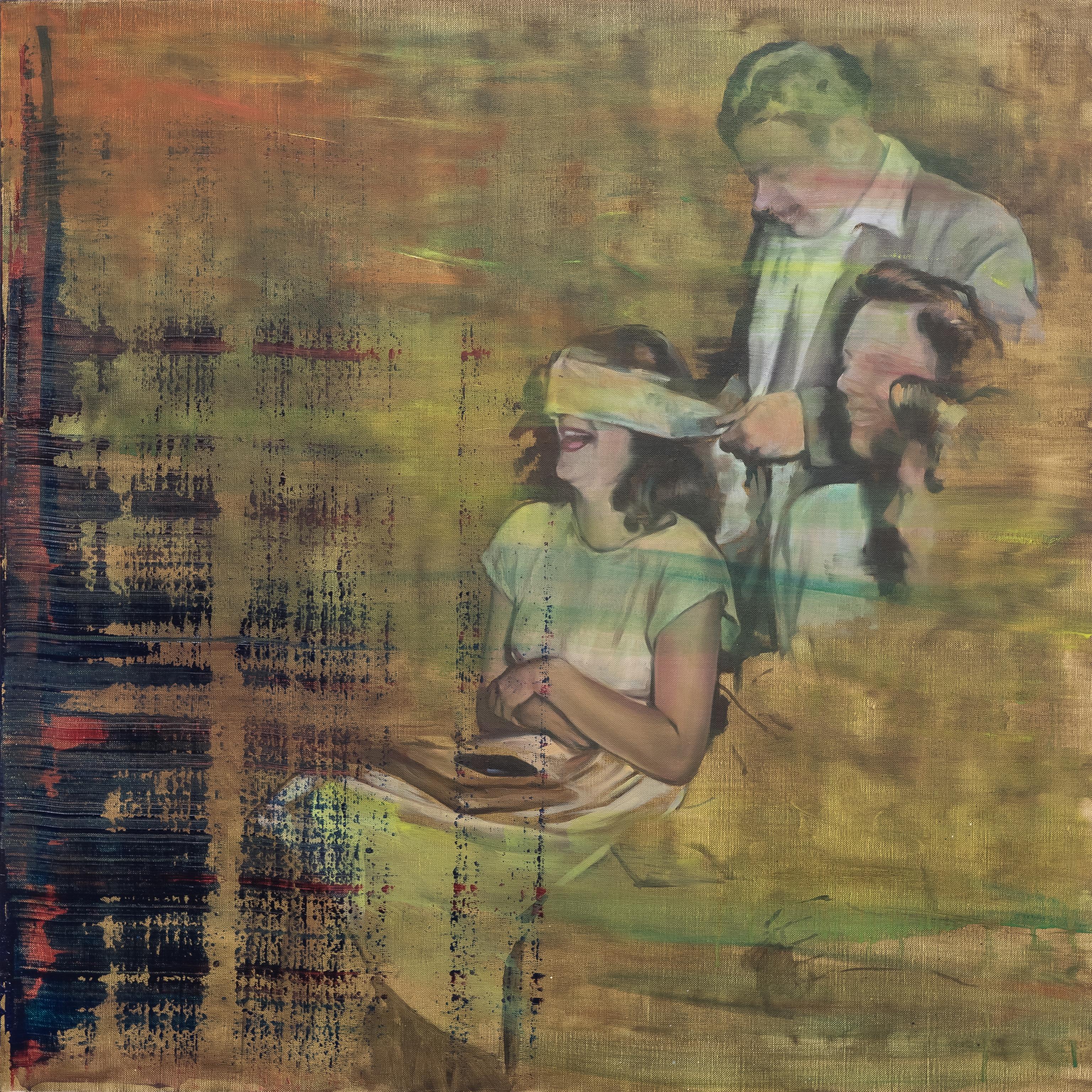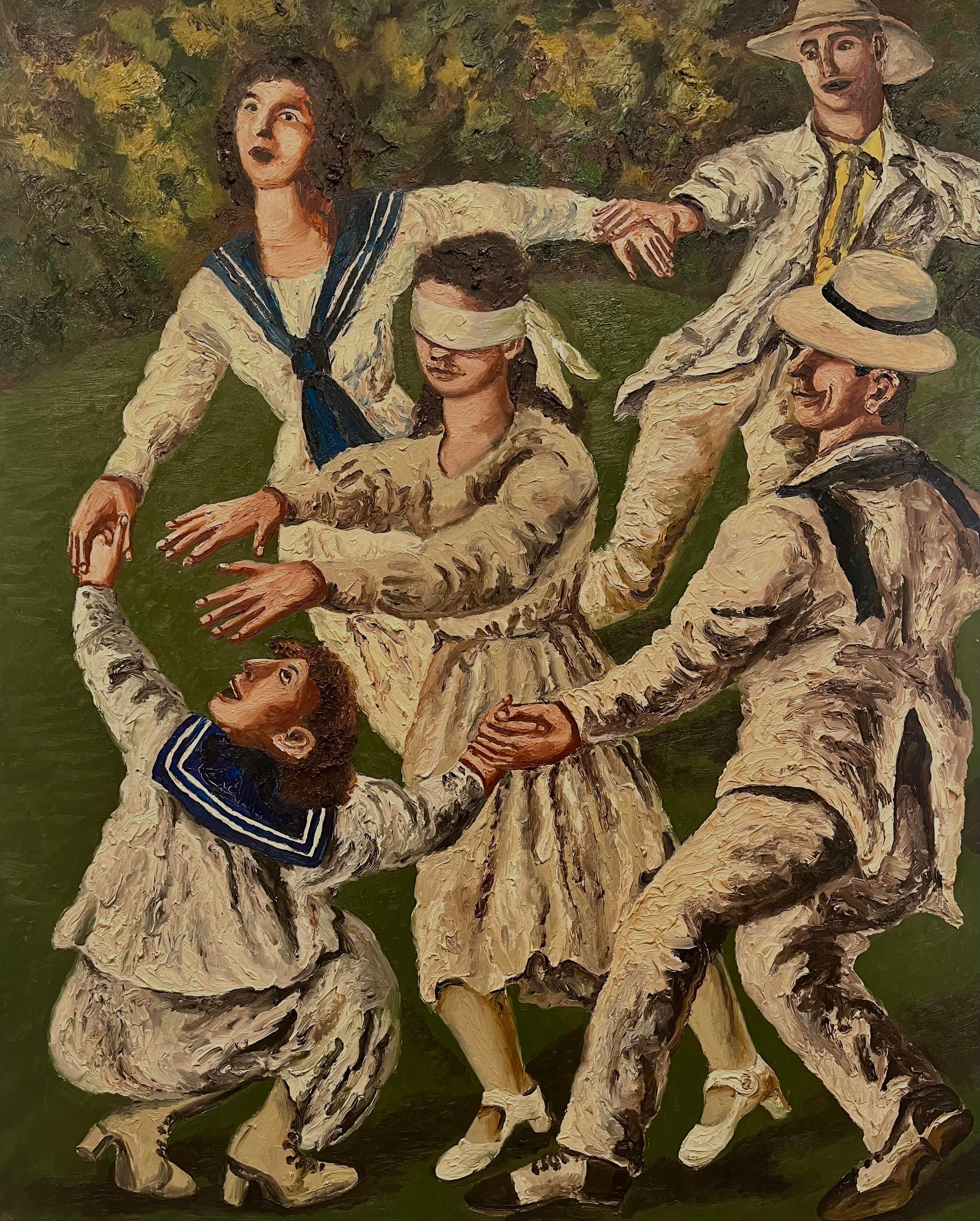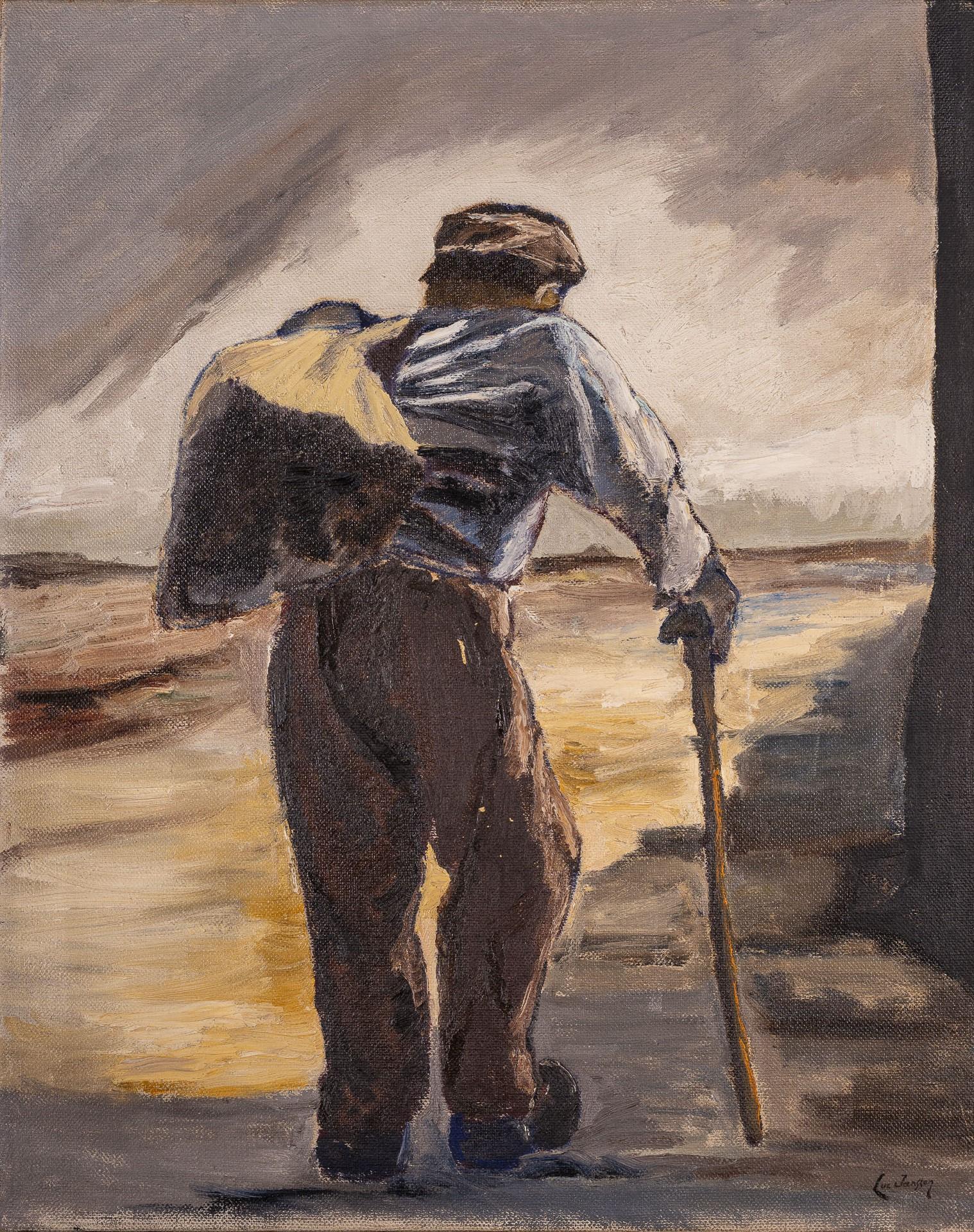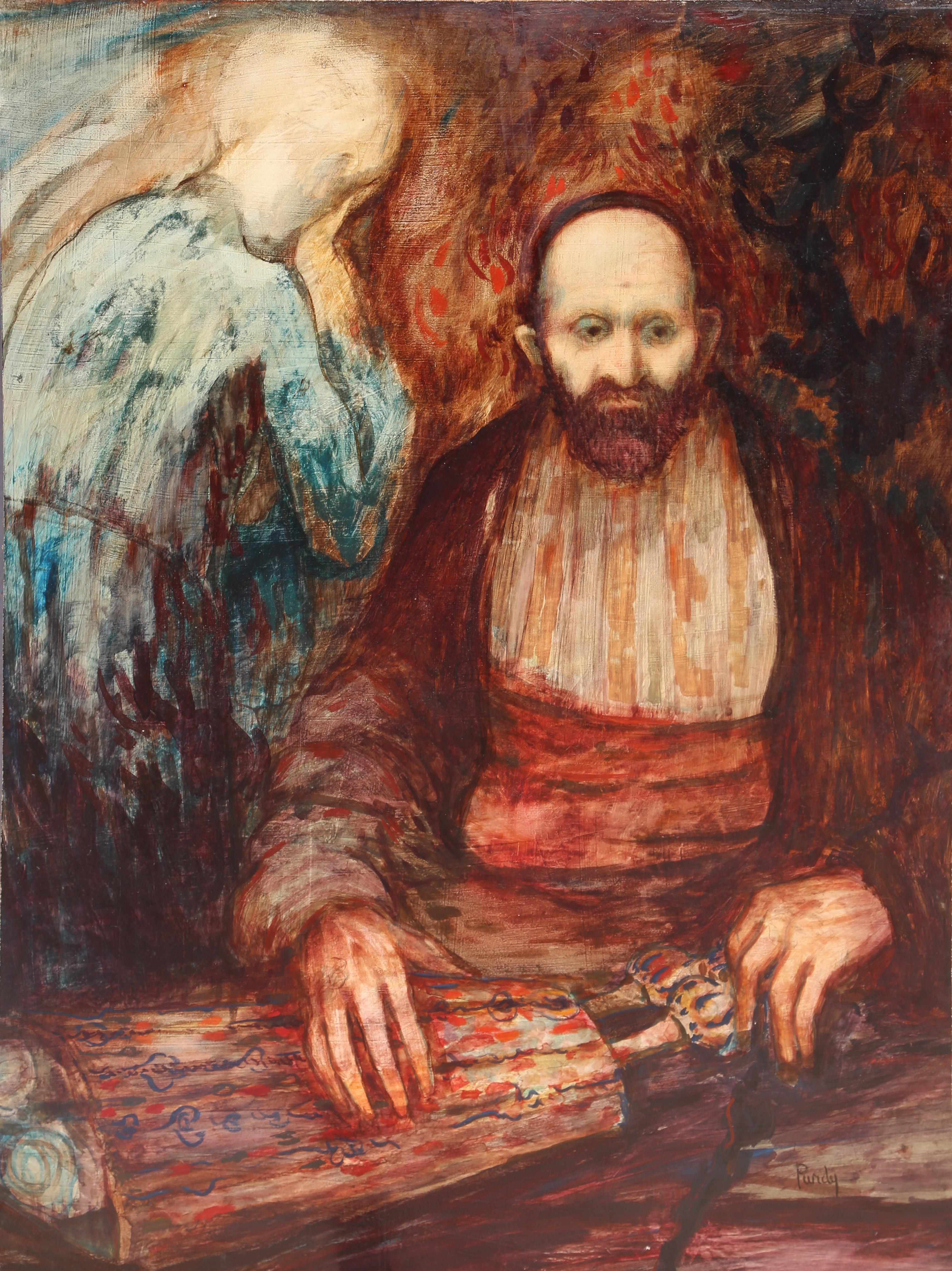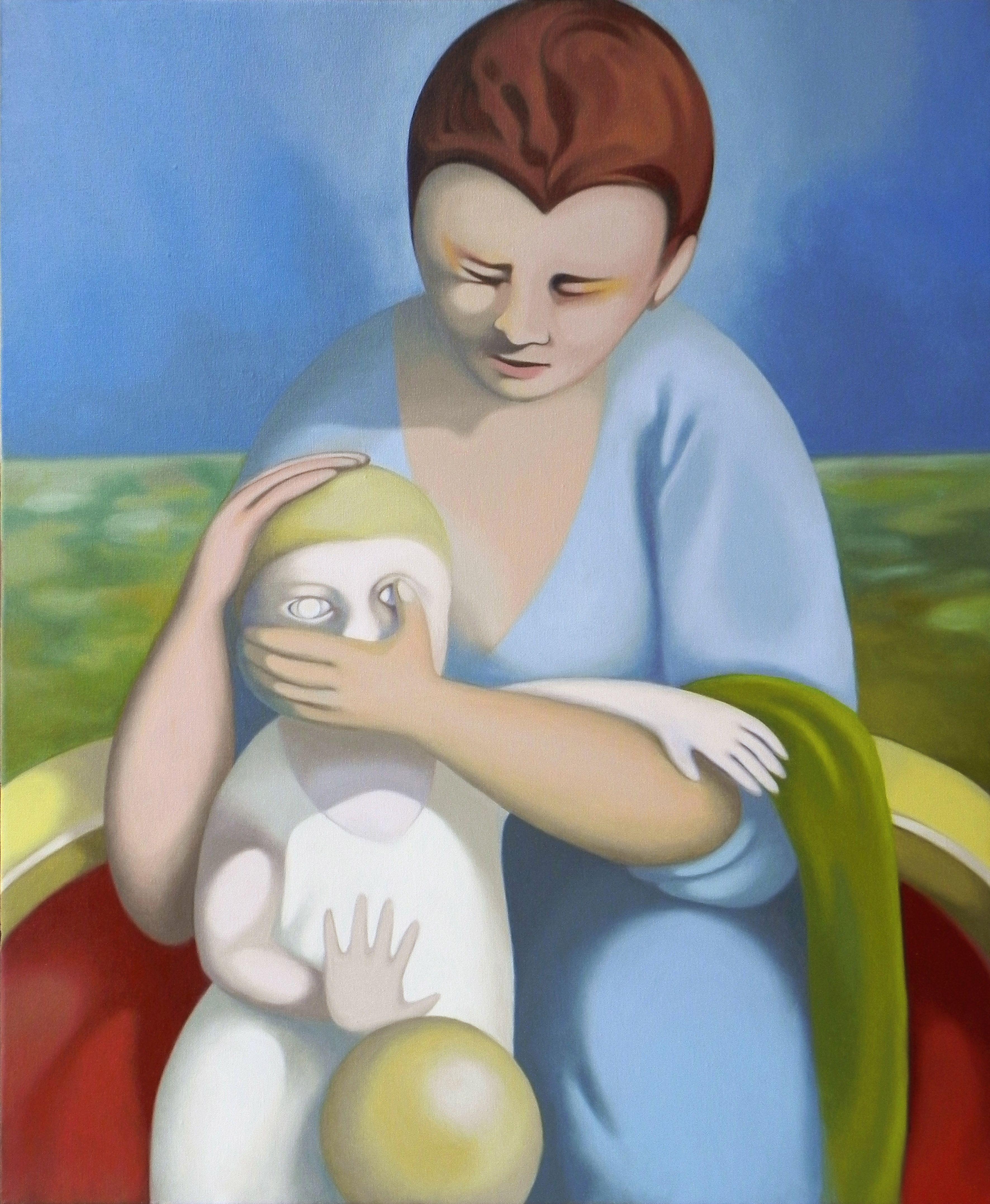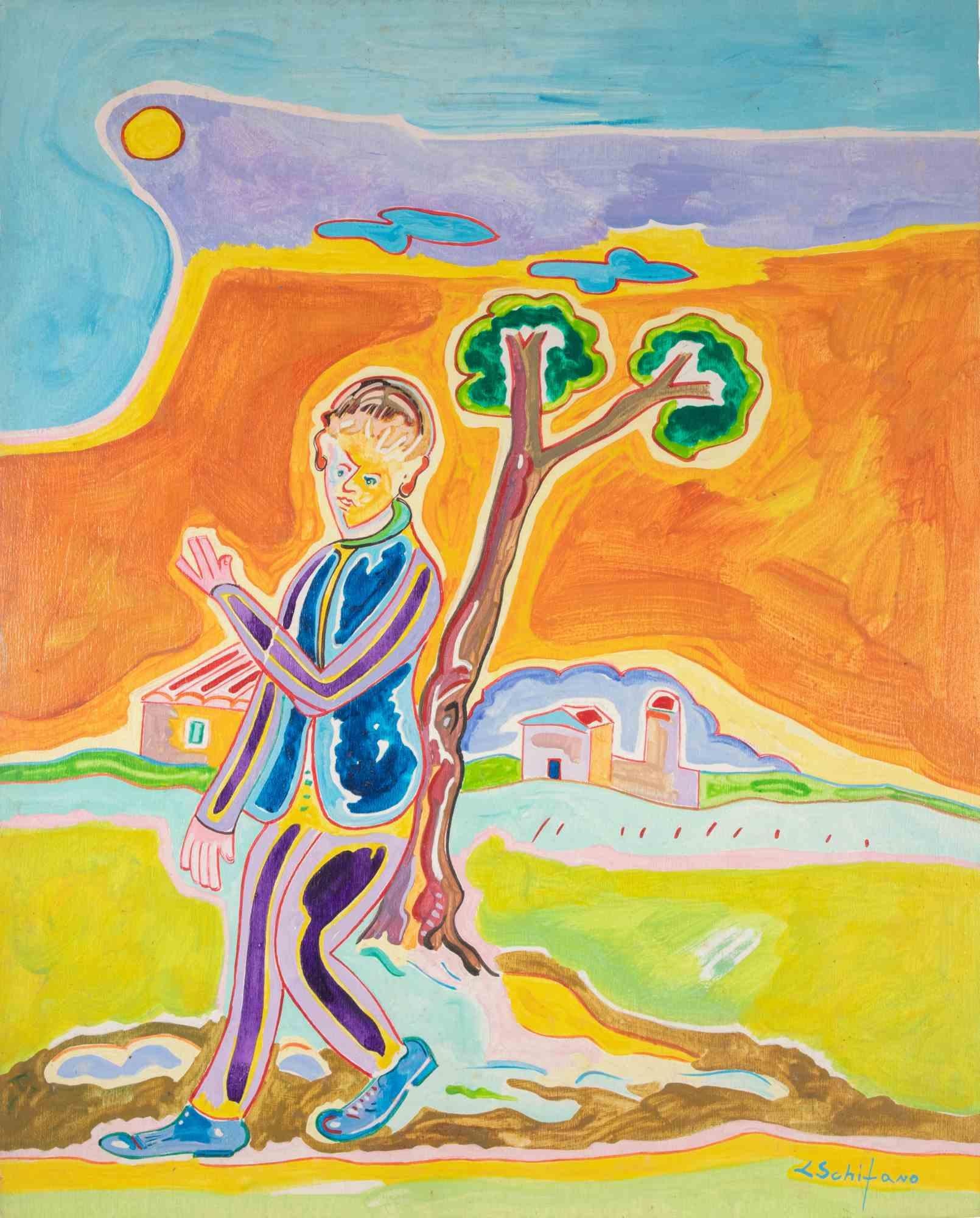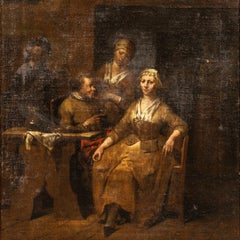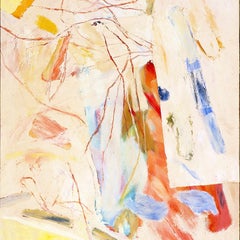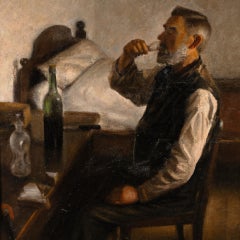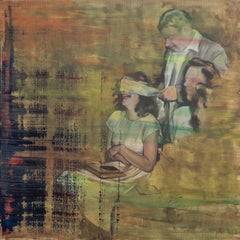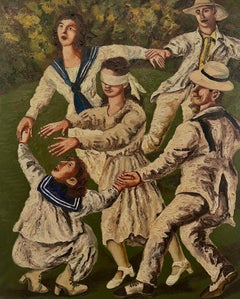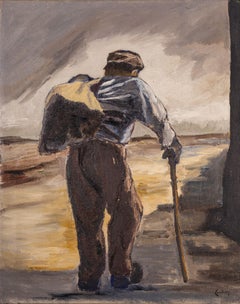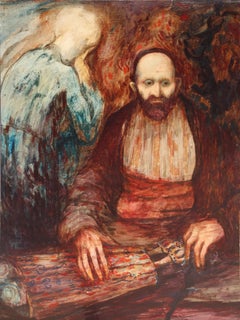Items Similar to The blind man, oil on canvas by Maurice Langaskens
Want more images or videos?
Request additional images or videos from the seller
1 of 19
Maurice LangaskensThe blind man, oil on canvas by Maurice Langaskens
$12,189.89
£9,268.95
€10,300
CA$17,103.74
A$18,689.38
CHF 9,689.19
MX$223,271.12
NOK 123,300.87
SEK 115,438.85
DKK 78,450.47
About the Item
A masterfully painted scene originating from the artist's studio
In this painting, Langaskens brings together several motifs that were also the subject of his graphic work: the blind man, the priest, the nun and the farm that also appears in the famous etching "les toits rouges" (the red roofs). These elements are brought together in a dynamic and colourful composition, where the similarities to that other Belgian painter, Anto Carte, are striking.
Combining these elements in this way creates a certain tension. Is the work about mercy (helping a blind man), or are we spectators of a scene where a poor wretch's purse is stolen?
Striking is the use of impasto, in which the painter emphasises the texture of fabrics and skin via flowing lines.
Maurice Langaskens 1884 - 1946 Biography
A Belgian painter and printmaker, Maurice (Maurits) Langaskens enrolled in the Académie Royale des Beaux-Arts in Brussels in 1901, and was trained as a decorative painter by the leading Belgian muralist and sculptor Constant Montald. From early on, Langaskens was recognized as a fine draughtsman, and won several prizes at the Académie. After living and studying for a few months in France in 1906, mainly in Dijon, the young Langaskens settled in Schaerbeek, outside Brussels. He began his independent career in 1907, when he exhibited three decorative paintings at the Salon in Brussels for the first time and also had an exhibition of his work shown at the Salle Boute in the city. The following year he contributed six paintings to the 16th annual exhibition of the Belgian artist’s association ‘Pour l’Art’ in Brussels, where he was to exhibit frequently over the course of his later career, until 1941. (Langaskens also designed the poster for the 17th ‘Pour l’Art’ exhibition in 1909.) Also in 1908, one of his paintings was selected for an exhibition of modern Belgian art in Berlin. Much of Langaskens’s early work was in a vibrant and visually arresting Art Nouveau or Symbolist style. This bold and colourful manner also translated well into large-scale mural commissions, and he soon became one of the leading painter-decorators of the early 20th century in Belgium. His decoration of the town hall of the city of Zoutleeuw in 1912 earned the artist considerable fame and the praise of his teacher and mentor Montald: ‘He was one of the best students in the class; today he is the most outstanding artist among the decorators of our time.’ The same year the first of several exhibitions of Langasken’s work was mounted at the Cercle Artistique et Littéraire in Brussels. The outbreak of the First World War, however, brutally interrupted the rise of the artist’s successful career. Drafted into the Belgian army at the beginning of August 1914, Langaskens was captured by the Germans after less than a fortnight. He spent the next three and half years as a prisoner of war, at internment camps at Sennelager, Münsterlager and Göttingen. He produced numerous, mostly small-scale paintings and watercolours of portraits and depictions of many of his fellow prisoners, as well as scenes of daily camp life, that are today regarded as among his finest and most personal works. It was also during this period that he painted two of his best-known pictures, the large canvas In Memoriam, painted in 1916 and depicting the burial of a Belgian soldier by his comrades, and the monumental triptych Repose en Paix, painted between 1915 and 1918. After his liberation and return to Belgium, Langaskens exhibited over eighty of the paintings and drawings that he had produced as a prisoner of war at the Galerie Sneyers in Brussels in 1918. After the Armistice, Langaskens - suffering from aphasia and nervous disorders brought about by his long confinement - painted mainly easel pictures of winter landscapes, rustic genre scenes and floral subjects, and also produced a number of designs for tapestries, book illustrations and stained-glass windows. Within a few years, however, his health had recovered and he returned to undertaking large-scale decorative mural commissions. In 1920 Langaskens was one of the founders, alongside Montald, Jean Delville, Emile Fabry and Albert Ciamberlani, of the Société de l’art Monumental, dedicated to the monumental decoration of public buildings and their integration into architecture. Among his first public commissions after the war was a large mural decoration for a school in Schaarbeek, completed in 1922. A monograph devoted to Langaskens was published in 1923, and important exhibitions of his paintings, drawings and prints were held in galleries in Brussels in 1924, 1925, 1930 and 1936. Between 1934 and 1935 Langaskens, along with other members of the Société de l’art Monumental, contributed to the extensive decoration of the municipal theatre at Leuven. He continued to exhibit throughout the 1940s, particularly at the yearly ‘Pour l’Art’ exhibitions. There he showed more and more of his superb graphic work, which had begun to take up much of his time. In 1943 Langaskens also provided illustrations for an edition of Maxence Van der Meersch’s novel L’empreinte du Dieu. After the artist’s death in 1946, the contents of his studio were sold at auction in Brussels and subsequently dispersed. Memorial exhibitions were held in Brussels in 1949 and in Schaarbeek in 1956, while more recently a retrospective exhibition of his work was mounted at the In Flanders Fields Museum in Ypres in 2003. By far the largest and most comprehensive collection of works on paper by Maurice Langaskens – numbering over five hundred drawings, watercolours and prints, mainly dating from his time as a prisoner of war but also including works from throughout his career - is today in the In Flanders Fields Museum in Ypres. Other drawings by the artist are in the Royal Museum of the Armed Forces and Military History in Brussels, the Metropolitan Museum of Art in New York, the Historial de la Grande Guerre in Péronne, the Commune de Schaerbeek, and in several private collections.
- Creator:Maurice Langaskens (1884 - 1946, Belgian)
- Dimensions:Height: 26.78 in (68 cm)Width: 33.86 in (86 cm)Depth: 1.58 in (4 cm)
- Medium:
- Period:
- Condition:
- Gallery Location:Gent, BE
- Reference Number:1stDibs: LU2140213801762
About the Seller
5.0
Vetted Professional Seller
Every seller passes strict standards for authenticity and reliability
Established in 2018
1stDibs seller since 2022
6 sales on 1stDibs
Typical response time: 6 hours
- ShippingRetrieving quote...Shipping from: Gent, Belgium
- Return Policy
More From This Seller
View AllThe Matchmaker, oil on canvas by Jan Baptist Lambrechts
By Jan Baptist Lambrechts
Located in Gent, VOV
Jan Baptist LAMBRECHTS (Antwerp, 1680 - after 1731), L'entremetteuse Canvas. On verso, wax stamp. 40 x 31 cm Expert : M. René MILLET
Lambrechts was born in Antwerp in 1680. His fathe...
Category
17th Century Figurative Paintings
Materials
Canvas, Oil
Impressionism painting 4 Oil on panel by Pierre Vlerick (1923 - 1999)
Located in Gent, VOV
This painting is a perfect example of lyrical abstraction and a choice painting out of the best period of Vlerick's career.
Pierre Vlerick’s work shows...
Category
1960s Abstract Impressionist Abstract Paintings
Materials
Masonite, Oil
Abstract Impressionistic painting on board Ineffable by Pierre Vlerick
Located in Gent, VOV
This painting is a perfect example of lyrical abstraction and a choice painting out of the best period of Vlerick's career.
Ineffable, 1962
Oil on Masonite board
91,5 x 61,5 cm (without frame) 93 x 63 cm (framed)
Signed and dated Top Right ‘P. Vlerick 1962’
with title, signature place and date at the back:
Ineffable P. Vlerick Afsnee 1962
Pierre Vlerick’s work shows some resemblance to Willem de Kooning’s. While the Dutch American was famed for the wild manner in which he treated his canvas, Pierre Vlerick showed some more restraint, but making a painting was in any case a slow process of stopping and starting and revising. His exploration is meant to result in a correct proportion of colour fields and streaks, often applied layer upon layer. All his colors have a luminous intensity. It was mainly Bonnard’s colorful work that inspired Vlerick to compose his own singular range of colors of slightly tingling yellows, greens, oranges and bits of blue here and there. Abstraction is emphasized by his use of color. Colors not associated with objects from daily life often dominate the composition: purple, for instance. This is the basis for his continuing abstraction, ending up as color fields combined with organic elements depicted with the vaguest of contours.
Though both artists create a very metropolitan, say even worldly art, their work evokes nature. De Kooning has been called a master of ‘abstract landscape’. The structure of Vlerick’s works, too, is very vegetable and organic. No wonder he referred to his paintings as his ‘gardens’. Neither artist allowed his garden to remain empty: de Kooning created a female figure looking like a cross between a floozy and the mother goddess. Vlerick imagined a woman who is enjoying her body. Vlerick’s approach to abstract art is the same as de Kooning’s; they refuse to paint in a figurative manner, yet at the same time do not wish to renounce referring to reality.
De Kooning once put it very accurately during an interview when he conceded that painting the human figure any longer was absurd(in the post-war period), but also stated that it would be even more absurd not to do it. The only way out of this ambiguous dilemma is the deconstruction of the human figure. Not in order to reject it, but to show it in all its fragility.
Pierre Vlerick’s exceptional artistic talents were already recognized while he was studying at the Ghent Academy (1940-1944) whereupon graduating he received a gold medal.
In 1947-1948 Vlerick enrolls at the “la Grande Chaumière Academy”, a Parisian private academy which attracts lots of foreign artists thanks to the reputation of its most important teachers such as Maurice Denis (1870-1943). Denis was one of the founding fathers of “the Nabis” and is also considered to be the godfather of abstract art by many artists and art critics. Maurice Denis is famous for his quote: "Remember that a painting, before it is any kind of representation, is essentially a flat surface covered with colors in a certain collected order."
At La Grande Chaumière, Vlerick is challenged to develop a pictorial language of his own. Vlerick develops a way to translate the observed reality into visions of color and form, which can be situated somewhere on the axis between the figurative and the abstract. Reality is decomposed and reconstructed into a complete new representation.
After a trip to Spain in 1955 the painter evolves towards the use of brighter colors. At the Brussels World Exhibition of 1958 (Expo 58) Vlerick is for the first time confronted with real works of 17 American artists (William Baziotes, James Brooks, Sam Francis, Arshile Gorky, Adolph Gottlieb, Philip Guston, Grace Hartigan, Franz Kline, Willem de Kooning, Robert Motherwell, Barnett Newman, Jackson Pollock, Mark Rothko, Theodoros Stamos, Clyfford Still, Bradley Walker...
Category
20th Century Abstract Paintings
Materials
Masonite, Oil
Farmer busy eating his lunch, (I think he's just boozing) by Axel Soeborg
Located in Gent, VOV
Søeborg, Axel (1872-1939)
The ochre yawn of autumn and the bitter sleep of winter are the preoccupations of Danish artist Axel Søeborg's landscapes. With his singular hand, Søeborg s...
Category
20th Century Modern Figurative Paintings
Materials
Canvas, Oil
Oil on pannel "The old fisherman woman" By Boudry Aloïs (1851-1938)
Located in Gent, VOV
This captivating oil on panel painting by Belgian artist Aloïs Boudry (1851-1938) is a testament to his mastery of realism. Titled "The Old Fisherman Woman," the artwork depicts a we...
Category
Late 19th Century Realist Figurative Paintings
Materials
Oil
Impressionism painting 21 Oil On Panels by Pierre Vlerick (1923 - 1999)
Located in Gent, VOV
This painting is a perfect example of lyrical abstraction and a choice painting out of the best period of Vlerick's career.
Signed and titled by the artist.
Pierre Vlerick...
Category
1960s Abstract Impressionist Abstract Paintings
Materials
Masonite, Oil
You May Also Like
Blind Man's Bluff - Contemporary Figurative Oil Painting, People Portrait
By Tomasz Bielak
Located in Salzburg, AT
Tomasz Bielak born in Lublin in 1967. He graduated of The Academy of Fine Arts, Painting and Graphics Design Department in Gdańsk, in 1994. He realized installation art, graphics ...
Category
2010s Contemporary Figurative Paintings
Materials
Canvas, Oil
Blindman’s Bluff
Located in New York, NY
Oil painting by Natalya Nesterova
Category
1990s Contemporary Figurative Paintings
Materials
Oil
The Beachcomber, Oil on canvas, 20th C, Signed Pauli.
Located in Leuven , BE
The Beachcomber, Oil on canvas, 20th C, Signed Pauli.
Category
Vintage 1960s Belgian Paintings
Materials
Canvas
Rabbi, Modern Oil Painting on Masonite by Donald Roy Purdy
By Donald Roy Purdy
Located in Long Island City, NY
Artist: Donald Roy Purdy, American (1924 - )
Title: Rabbi
Medium: Oil on Masonite, signed l.r.
Size: 36 x 24 in. (91.44 x 60.96 cm)
Category
Late 20th Century Post-War Figurative Paintings
Materials
Masonite, Oil
The blind son, Painting, Oil on Canvas
By Federico Cortese
Located in Yardley, PA
An original piece from the series “They sleep on the hillâ€, oil on canvas, 50 x 60 cm, 2009. In the “Spoon River Anthology†the poet Edgar Lee Masters tells the story of t...
Category
Early 2000s Other Art Style Paintings
Materials
Oil
Country Figure - Painting by Luciano Schifano - 1988
Located in Roma, IT
Oil on wooden table realized by Luciano Schifano (1943) in 1988.
Hand signed and titled.
Good condition.
Category
1980s Contemporary Figurative Paintings
Materials
Oil
$473 Sale Price
20% Off
More Ways To Browse
16th Century Portrait Oil Paintings
The Nun
Famous Etchings
Large 16th Century Oil Paintings
Constant Montald
Roof Elements
Master Copy Painting
Naked Girl
Oil Painting Sailor
Pre Raphaelite Oil Paintings
St Louis Painting
Swimming Underwater
Western Cowboy Art Paintings
1940s Illustration
American Flag Painting
Antique Oil Paintings Antique Pre 1900 Paintings
Bob Ross
Di Donna
